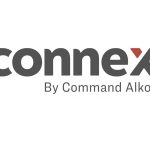Industry Talk
Regular Industry Development Updates, Opinions and Talking Points relating to Manufacturing, the Supply Chain and Logistics.Business continuity and disaster recovery in 2019

What are the biggest cyber threats to business continuity in 2019?
The biggest threat to business continuity will be organisations failing to adopt a disaster recovery solution (DRaaS) in the cloud. As this will prove to be one of the only ways to mitigate some of the most pertinent ongoing threats such as ransomware. The cloud can be an ‘air gap’, offering a final line of defence when others fail. Rather than recovering the data from on-site – which can take a long time as you’re restricted by bandwidth and network latency – the quickest and most economical way of resuming a service is to allow the system to restart in the cloud.
So your virtual machine running your operation system has access to your backed-up data and restarts in the cloud. Then all you have to do is point your Windows interfaces to that and your business is back up and running. That form of cloud-based disaster recovery provides a much higher level of service for bringing back business functions. You can back up to it and switch it off so there’s no connection, whereas on-site you’re continuously connected. The cloud provides many additional security features by default, which is why not having a DRaaS solution as part of your overall business continuity architecture will be the biggest threat to businesses.
What’s next for disaster recovery?
Disaster Recovery as a Service (DRaaS) is still in its early stages, but many businesses will be looking to mitigate the effects of disasters by avoiding them altogether. As more intelligent predictive analytics solutions are developed, the industry will be able to start looking at proactive disaster avoidance.
By using predictive analytics to collect data from multiple sources and analyse the different things that could create a disaster, businesses will be able to automatically initiate the movement of data and services to data centres that aren’t at risk. They can proactively and seamlessly migrate workloads around potential threats, whether it’s a power cut, a flood, or a tornado. I think we’re going to see a lot of effort in this area because as disaster avoidance is the next big step forward in business continuity. Being able to prevent the disaster from happening in the first place is where businesses really want to be.
What’s next in the BCDR market?
The field of business continuity and disaster recovery (BCDR) will witness an increase in mergers and acquisitions. We’ll see more collaboration, as there are a lot more data protection vendors now working with storage vendors, backup vendors and security providers to improve their route to market.
There will be a huge growth in the appliances space. If you look at the major IT paradigm changes, server virtualisation was one of the main shifts, not only for the rate of adoption, but also the sheer size of the markets that have since been created. Looking forward, the next paradigm shift in the hardware environment will be hyperconverged, which offers the ability of a turnkey solution. If your business wants a certain amount of compute, a certain amount of storage and a certain amount of network interconnect, you can just buy a hyperconverged boxes that comes equipped with a hypervisor. This has become a much more scalable way of buying infrastructure in 2019.
What advice do you have for companies wanting to migrate their data to the cloud in 2019?
The best advice I can give is to take your time. Cloud offers a lot of great benefits to companies, but they don’t need to migrate all their data at once. Take your time to fully understand all of the costs associated with your cloud provider – the costs for adoption, the monthly recurring costs which you only know after your first month’s bill and, most importantly, the cost to move. What will they charge you for getting out of that cloud? I’ve spoken to so many customers that have said they have been charged a fortune to get out, so make sure you know what you are getting in to.
What businesses should also do is test their cloud provider for the services they deliver versus the services they put on their data sheets. By definition, all cloud providers are providing multi-tenancy – i.e. lots of customers using a shared infrastructure. As a result, guaranteeing service levels isn’t easy to do, so customers should test it so they know exactly what performance they are getting for their money.










